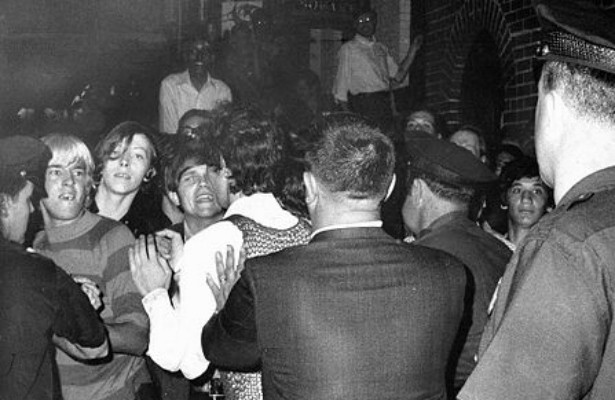From Stonewall to the classroom: Tips for teaching LGBTQ+ history
LGBTQ+ history is often absent from history classes. Here are resources for you to get started teaching LGBTQ+ history in yours.

PHOTO FROM THE ATLANTIC
When New York City police raided the Stonewall Inn, one of the city’s prominent gay bars, in the predawn hours of June 28, 1969, customers and allies stood their ground and fought back, leading to days of protest and riots. The Stonewall Riots became a pivotal moment in the LGBTQ+ civil rights movement – an important key to understanding the last 50 years of American social, legal, and political history.
However, if you’re a student in many public schools around the country, you probably won’t be taught this history. You also probably won’t learn about the Lavender Scare, when the U.S government fired and denied employment to thousands of gay federal workers in the 1950s; or about the 1978 Briggs Initiative, when Californians voted on whether to ban LGBTQ+ individuals from working in California public schools; or about the first recorded conviction of a lesbian relationship in North America in Plymouth, Mass., in 1649.
Here at XQ, we understand that students need to see themselves in the curriculum, and that representation is vital to healthy, rigorous learning environments.
While some states, including California, Colorado, Illinois, New Jersey, Oregon, and Maryland have taken action to ensure LGBTQ+ history is included in the curriculum, the vast majority of the country has not.
If history, in large part, is about understanding the present — making sense of culture, laws, social structures, and ourselves — how can we deny students these stories? As Maya Angelou noted, “The more you know of your history, the more liberated you are.” Shouldn’t we want that for students – to become liberated?
The state of LGBTQ history curriculum
This summer, Illinois became the fourth state to require schools to teach LGBTQ+ history. Colorado and New Jersey each passed laws to the same effect earlier this year, and Maryland may soon make it official, as well. Oregon also just passed a bill to teach the contributions of LGBTQ+ individuals and communities in “geography, economics, and civics.” Only since 2011, when California passed the FAIR Education Act, has any state moved to legally require schools to include LGBTQ+ history in the curriculum.
However, even in states like California, where we’re almost a decade into the new law, schools are still dragging their feet, not adopting new textbooks or new curriculum. And in six states, Alabama, Louisiana, Mississippi, Oklahoma, South Carolina, and Texas, educators are prohibited from “promoting homosexuality,” meaning they cannot teach anything about the LGBTQ+ community with any intellectual or historical integrity.
So, what can you do?
Creating an atmosphere where LGBTQ+ history is available to all students will take a multi-pronged strategy – and many organizations, educators, and activists have been doing this work for years. Below we’ve compiled some classroom resources for educators who want to offer a more inclusive and complete discussion of the country’s history.
Classroom resources:
- Lesson plan: LGBTQ History and Why It Matters (Facing History and Ourselves)
- Curriculum: LGBT-Inclusive Curriculum (Gay, Lesbian, and Straight Education Network)
- Podcast: LGBTQ History in Public Schools (Teaching Tolerance)
- Online Communities: LGBTQ youth resources: Bridging the digital divide
Want to read more and dig deeper into LGBTQ+ history? Check out some of these books:
- The Gay Revolution: The Story of Struggle by Lillian Faderman
- The Straight State: Sexuality and Citizenship in Twentieth-Century America by Margot Canaday
- Black Queer Studies: A Critical Anthology edited by E. Patrick Johnson and Mae G. Henderson
- Asegi Stories: Cherokee Queer and Two-Spirit Memory by Qwo-Li Driskill
- Queer Brown Voices: Personal Narratives of Latina/o LGBT Activism edited by Uriel Quesada, Letitia Gomez, and Salvador Vidal-Ortiz
- Odd Girls and Twilight Lovers by Lillian Faderman
- Real Queer America: LGBT Stories from Red States by Samantha Allen
Do you have a story to tell about LGBTQ+ history curriculum efforts in your community? Email [email protected] or share on social by tagging @XQAmerica and #ReThinkHighSchool.









